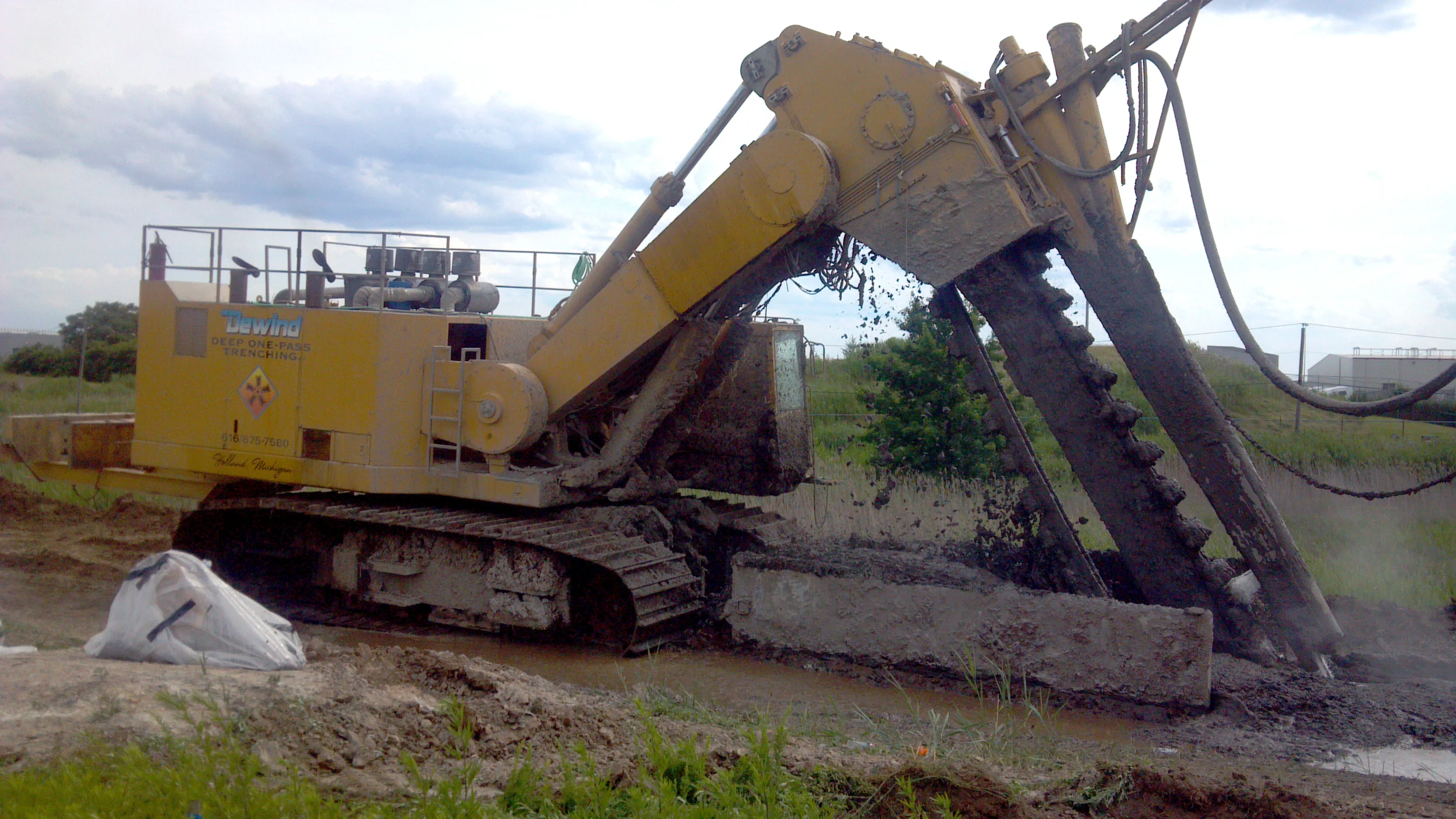HYDRAULIC BARRIER WALL
LOCATION: EDISON, NJ
CLIENT: CONFIDENTIAL
MARKET SECTOR: ENERGY UTILITY
SIZE: 7,400 LINEAR FEET





PS&S provided geotechnical, site civil engineering and environmental engineering plus survey services for the design and construction of a perimeter hydraulic barrier wall (HBW). The HBW was required as an engineering control to contain groundwater contamination.
THE OPPORTUNITY
The opportunity was to support the remediation of the former chemical manufacturing site. Using a Remedial Action Report (RAW), prepared by another consultant, it required the design and construction of a perimeter HBW to contain dense non-aqueous phase liquid (DNAPL) and contaminated groundwater. The RAW specified a maximum hydraulic conductivity and required the HBW to extend a minimum distance into an underlying hydraulically restrictive (i.e., confining) layer.
THE CHALLENGE
The HBW would be constructed by in-place soil mixing using a one-pass deep chain trencher tool. A working platform (WP) of compacted structural fill was necessary to support the heavy deep chain trencher tool which was required to install the HBW to depth of 70 feet bgs. The surficial soils comprised weak organic soils and loose dredge sediments that were susceptible to failure under the loads imposed by the WP and the deep chain trencher tool. The RAW required that the successful construction be documented in a series of engineering reports to be signed and sealed by a New Jersey Professional Engineer.
THE PS&S SOLUTION
To overcome the weak near-surface soils, PS&S performed supplemental test borings and a geotechnical engineering laboratory testing program. The borings confirmed the extent of the weak soils and depths to the confining layer along the perimeter HBW alignment. The geotechnical engineering study confirmed the shear strength and consolidation properties of the unstable soils. This data was used to develop a ground improvement program that included the placement of a carefully selected geogrid and a monitored preload soil placement program. The preload program was designed and installed to increase the shear strength of the weak soils by inducing over-consolidation. In combination with the geotechnical engineering analysis, PS&S developed a series of construction level drawings that defined the limits and grades of the WP and the centerline location of the HBW. As the WP and the preload program were constructed, PS&S performed in-place density tests at 100-foot intervals.
RELATED PROJECTS
DISCIPLINES INVOLVED
GEOTECHNICAL


